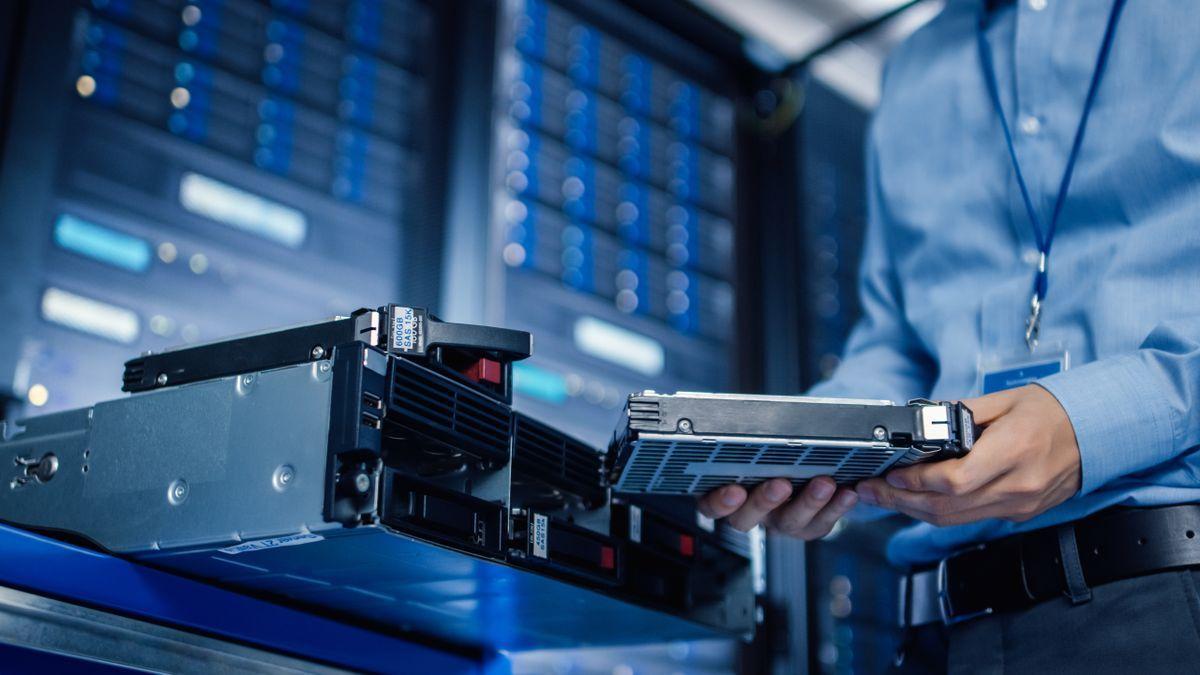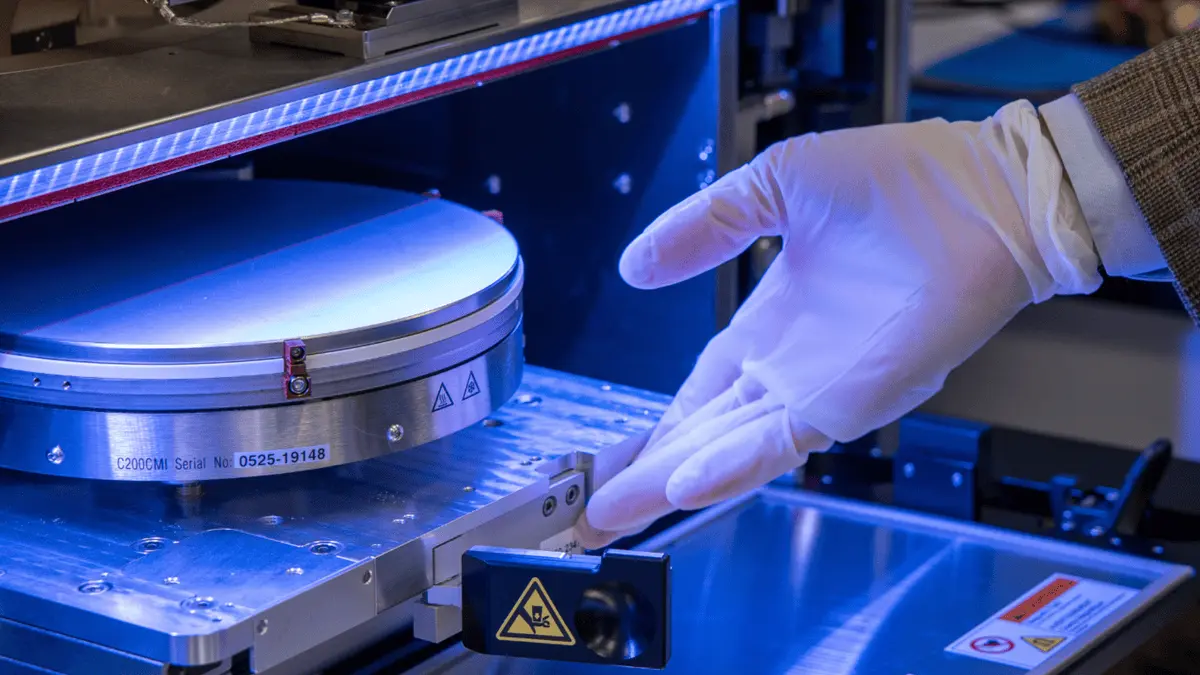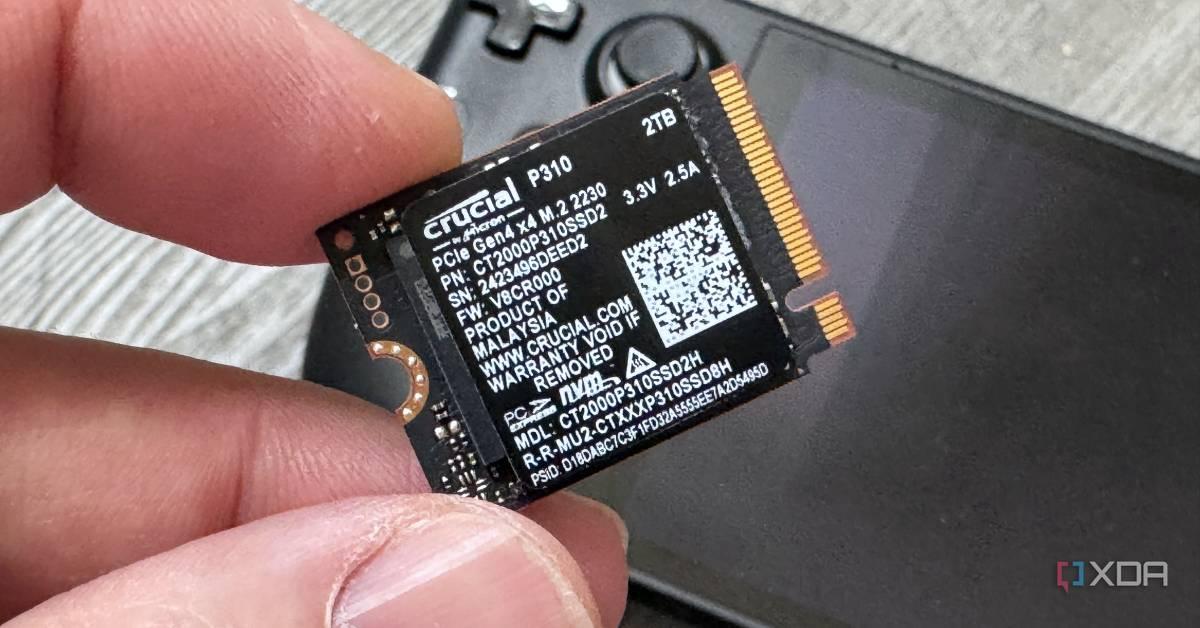Chinese AI Firms Bypass US Chip Restrictions by Exporting Data to Malaysia
5 Sources
5 Sources
[1]
Massive petabyte data transfers are replacing black market chips as China trains AI outside its borders
GPU-rich Malaysian data centers are becoming ground zero for offshore Chinese AI training As the United States continues to tighten export restrictions on advanced AI chips, such as those produced by Nvidia, Chinese AI companies are turning to a workaround that feels almost analog in today's digital world. Rather than relying on online transfers or sanctioned hardware, some firms are physically transporting vast datasets on hard drives across borders. A report from the Wall Street Journal claims four Chinese tech workers recently flew into Malaysia, each carrying 15 high-capacity hard drives, totaling an astonishing 4.8 petabytes of data, intended for training large language models. US restrictions have made it increasingly difficult to acquire high-end AI GPUs through legal channels. Although Nvidia maintains, "there is no evidence of chip diversion," on-the-ground reports suggest otherwise, with a black market for smuggled Nvidia GPUs thriving in China. Some of these chips are reportedly entering the country through subsidiaries and partners in neighboring nations. However, that route is becoming more expensive and riskier due to heightened scrutiny and diplomatic pressure from Washington on these intermediary countries. As a result, companies are shifting tactics: rather than importing restricted chips, they are exporting massive volumes of training data. This is a complex and resource-intensive process. Companies carefully plan the physical transportation of data, distributing drives to avoid detection by customs. They also rent GPU-rich servers in third-party countries such as Malaysia to process the data. One example involves a Chinese firm that used its Singapore-registered subsidiary to sign a data center contract. However, the Malaysian partner later insisted on local registration to avoid regulatory pressure, as Singapore began tightening its own controls. Despite increasing efforts by US agencies, enforcement gaps and logistical loopholes continue to be exploited. While shipping petabytes of data on hard drives may seem outdated, it sidesteps bandwidth limitations and digital surveillance. The use of hard drives, ranging from large SSDs arrays to high-capacity external HDDs, is central to these covert transfers. Still, it raises a question: why not use magnetic tape, especially given that modern LTO-10 formats can store up to 30TB uncompressed and 75TB compressed? The answer likely lies in practicality. Tape solutions require specialized read/write hardware and lack the plug-and-play convenience of high-end HDDs commonly used today.
[2]
Chinese AI Companies Are Using an Absurd Loophole to Get Around US Chip Restrictions
In case you haven't heard, the United States is embroiled in a life-and-death arms race. Only it's not conventional weapons or even world-ending ICBMs we're rushing to build, and it's definitely not a matter of life and death. The purported arms race, of course, is the rush to build artificial intelligence, and the US' adversary -- for reasons even the Pentagon's most committed war hawks struggle to articulate -- is China. In an effort to delay China's flourishing tech sector, Washington has gone to extreme lengths to keep American semiconductors, often called "chips," out of the People's Republic. But while US officials on both sides of the aisle wax lyrical about China's nefarious "ambitions," Chinese AI companies are slipping by US chip controls with all the effort of a Laurel and Hardy routine. As first observed in the Wall Street Journal, Chinese engineers are getting around Washington's chip restrictions by simply flying to other countries where US prohibitions don't apply. It looks like this: Chinese software companies rent out data centers in countries like Malaysia, which contain troves of US-made chips. (Though the Biden administration put tight controls on chip exports to Malaysia, Trump's tariff extravaganza has largely done away with them.) The Chinese companies then send software engineers to Malaysia, packing suitcases full of hard drives. Each drive holds terabytes worth of AI training data, according to the WSJ. Once in Malaysia, the Chinese engineers plug that data into the servers, training the AI models. After all is said and done, the engineers store the trained large language model (LLM) on their drives and fly back home. The ingenious sneakernet workaround is taking place all over Southeast Asia and the Middle East, the WSJ reports. And though it's a rather simple operation on paper, the actual maneuvers take eight weeks or more to set up -- everything needs to be in place once the engineers arrive, as major changes are difficult to implement after the drives leave the mainland. "This was something we were consistently concerned about," said Thea Kendler, a Biden administration export official. Kendler, a noted China hawk, has described Biden's intense restrictions on technological exports as necessary to disrupt China's "military advances" -- conveniently overlooking the vast US military blockade encircling mainland China. If enterprising nations like Malaysia want to play the American game -- capitalism, that is -- by charging Chinese tech companies to rent out their data centers, then there's no overt reason Washington ought to intervene. Covertly, it's been said, a strong Chinese tech sector represents a major threat to US economic interests, by offering an alternative to the type of financial hegemony the US currently enjoys around the world. As AI industry reporter Garrison Lovely put it: "Only one superpower has a government commission publicly calling for a militarized race to build superintelligent AI (with no plan for how to control it), and it's not China."
[3]
The Wild Ways China Smuggles NVIDIA Chips | AIM
Chinese AI engineers are flying to Kuala Lumpur with hard drives of training data. They use NVIDIA chips in Malaysian data centers to train models, then take the results back to China. For Chinese AI companies, US government restrictions on NVIDIA chips only kick in if they give up. These companies have once again found a workaround to obtain NVIDIA hardware. According to the Wall Street Journal, engineers from Chinese AI companies are heading to Kuala Lumpur, Malaysia, with hard drives packed with instructions and data to train AI models. They then utilise the NVIDIA chips available in Malaysian data centres to train the model and return it to China. The report added that engineers decided it would be faster to fly physical hard drives with data into Malaysia than to transfer data online. This unnamed Chinese company also reportedly registered an entity in Malaysia to avoid raising suspicions. The aforementioned method is deemed an alternative to directly smuggling NVIDIA hardware in China, which was made difficult due to recent crackdowns from multiple government agencies. For instance, Malaysia's semiconductor industry closely monitors the movement of chips across borders, aligning with the US push for stricter regulations on suspected stock movement through the Southeast Asian country. Malaysia and Singapore are listed as Tier 2 countries in the US government's Framework of Artificial Intelligence Diffusion, which permits limited chip exports without a license. China is categorised in Tier 3, where exports are banned or highly regulated. However, this existing framework will be replaced with a more straightforward approach, moving away from the tier-based system. Moreover, authorities in Singapore and the US are investigating allegations that NVIDIA chip servers worth $390 million sent to Malaysia were fraudulently redirected to China. Furthermore, last month, a US lawmaker introduced a bill to address chip smuggling. The bill would require companies like NVIDIA to include technology to verify the location of their chips before exporting them. The regulations, scrutiny, and crackdown were implemented in response to Chinese AI companies employing multiple illicit methods. The Centre for a New American Security (CNAS), a US-based think tank specialising in national security issues, estimated that out of the 22 "notable" AI models developed in China as of 2025, only two were trained with Chinese chips. "Most of the Chinese chip sellers interviewed in these [media] reports confirm that they work with multiple distributors, use shell companies based overseas, and employ simple tactics to avoid detection, such as relabeling shipments as tea or toys," the CNAS report read. Last year, The Information reported that an unnamed electric appliance company in eastern China had ordered hundreds of servers equipped with NVIDIA's H100 GPUs, worth $120 million, with the help of a chip broker in Malaysia. This broker had assisted the Chinese firm in setting up a shell company in Malaysia and renting space in a data centre. The report highlighted many such cases of Chinese companies illegally obtaining NVIDIA chips. Moreover, as per a Reuters report, Chinese universities and research institutes had acquired GPUs from resellers in the country. These resellers purchased servers from Super Micro Computer and Dell, which were equipped with NVIDIA chips. Besides, Amazon-backed Anthropic, the AI lab that built the Claude family of models, said that smugglers in China hide processors in "prosthetic baby bumps" and pack GPUs alongside live lobsters. Singapore accounts for a considerable part of NVIDIA's reported revenue, despite very few physical hardware shipments to the country. Between August and October 2024, Singapore contributed 22% to NVIDIA's sales revenue. However, Bloomberg reported that actual physical shipments to Singapore account for only 1% of NVIDIA's total revenue, showing a significant gap between where NVIDIA records sales and where its hardware is actually delivered. In Q1 2025, Singapore accounted for 20% of NVIDIA's billed revenue. Citing publicly available information, the CNAS report said there were 1 lakh H100 GPUs as of December 2024. While Anthropic accused Chinese companies of smuggling GPUs, NVIDIA reportedly denied such claims. An NVIDIA spokesperson said American firms like Anthropic should focus on innovation and rise to the challenge, "rather than telling tales about large, heavy and sensitive electronics somehow being smuggled in baby bumps or alongside live lobsters". Furthermore, the 'AI czar' appointed by US President Donald Trump, David Sacks, also refuted the practicality of such smuggling mechanisms. In an interview at the AWS Summit last month, Sacks said, "We talk about these chips like they can be smuggled like diamonds in a briefcase -- that's not what they look like. These are server racks that are eight feet tall and weigh two tonnes." "They don't magically walk out the door," he added. That being said, despite Chinese companies reportedly using various techniques to work with NVIDIA chips, the company isn't backing down either. The US government and NVIDIA have been engaged in an ongoing cycle of restrictions and workarounds. The government has repeatedly blocked NVIDIA from selling high-end AI chips, prompting the company to develop less powerful versions that comply with the new limits. This pattern has repeated multiple times. Currently, NVIDIA is reportedly developing a new chip that is less powerful and less expensive than its H20 chips, which are the latest to face US government restrictions.
[4]
Chinese AI developers fly hard drives abroad to sidestep US chip curbs: WSJ report
Such moves challenge the limits of US export controls. The layers of intermediaries between US tech and their Chinese users make it difficult to ascertain if US laws are being broken. Meanwhile, Middle East could become another hub for Chinese AI developers looking to access US chips.Chinese artificial intelligence (AI) companies are physically moving data outside the country as a workaround to the US curbs hindering access to advanced semiconductors, according to a Wall Street Journal report. Since 2022, the US has tightened restrictions on the sale of advanced AI chips and tech to China over national security concerns. While some use domestic chips as substitutes, others smuggle US-made hardware through third countries, though this has become harder due to increased US pressure. Chinese AI developers are now employing a new tactic of moving their data abroad to places like Southeast Asia and the Middle East, allowing them to access American AI chips outside China. These strategies challenge the limits of US export controls. There exist layers of intermediaries between US tech and their Chinese users, making it difficult to ascertain if US laws are being broken. In its final days, the Biden administration proposed country-specific chip purchase caps to prevent countries like Malaysia from supplying China. These caps would have required overseas buyers to accept national security terms, potentially banning Chinese access. However, in May, the Trump administration dropped the plan, citing the regulatory burden on US firms like Nvidia. Instead, it warned companies to ensure their products aren't used to train Chinese AI models. At a Chinese AI company, executing the "Malaysia plan" took months of preparation, people involved in the process told WSJ. Engineers physically fly hard drives containing massive data sets into Malaysia, as transferring the massive data sets over the internet could take months. Before the trip, they spent over eight weeks optimising the data and fine-tuning the AI training program, knowing updates would be difficult once the data left China. The company had previously used the same Malaysian data centre in July, operating through a Singaporean subsidiary. But as Nvidia and its vendors increased scrutiny of AI chip end users, the Malaysian data centre asked the Chinese firm to switch to a local Malaysian entity to avoid attention. The company then registered a Malaysian business in Kuala Lumpur, listing three local citizens as directors and an offshore holding firm as the parent company, corporate records show. To avoid drawing attention at customs, engineers split the hard drives across four suitcases, unlike the previous year when they packed everything into one. They recently returned to China with several hundred gigabytes of results, including model parameters from the AI training, WSJ reported. Though cumbersome, this approach allowed them to avoid importing AI hardware into China, which has become increasingly risky due to tightening controls across Southeast Asia. In February, Singaporean authorities accused three individuals of falsely declaring the destination of Nvidia servers worth millions. While Singapore doesn't enforce foreign export laws, officials stated they won't tolerate misuse of the country to sidestep such controls. Data centres are rapidly emerging across Southeast Asia. Real estate firm Jones Lang LaSalle estimates that Singapore, Malaysia, Thailand, and Indonesia collectively have nearly 2,000 megawatts of data centre capacity, comparable to the combined capacity of London and Frankfurt, the largest data centre hubs in Europe. In March and April alone, Malaysia imported $3.4 billion worth of AI chips and other processors from Taiwan -- exceeding the country's total imports of such chips for all of 2024, according to Taiwan's International Trade Administration. These facilities cater to both Western and Chinese clients. Earlier this year, a Beijing-based tech firm took over a lease for 200 AI servers that a data centre in Malaysia had originally earmarked for an American cloud-computing company, people familiar with the arrangement told WSJ. Meanwhile, as the Middle East becomes a hub of AI investments from the US, courtesy of agreements signed during President Donald Trump's visit to the region, it could become the hotbed of Chinese activity.
[5]
After Smuggling Chips, China's AI Engineers Now Sneak Hard Drives Into Malaysia to Train AI Models Using Rented NVIDIA High-End AI Chips
China always finds new ways to fulfill its AI needs, as Chinese engineers are now taking their hard drives with AI models to other nations to access high-end chips. The US export controls have played their part in restricting the influx of high-end AI chips into China, but despite that, Chinese AI firms have managed to find various workarounds, whether through smuggling chips into the country or by renting out AI servers in other countries. Now, according to WSJ, a new incident has reportedly popped up, where engineers have reportedly smuggled hard drives with a combined storage capacity of more than eighty terabytes, which contained spreadsheets, images, and video clips for AI training. These hard drives were then used on rented AI servers in Malaysia, bypassing US export controls. Chinese AI developers claimed that planning this incident took several months. They decided to fly out drives instead of transferring data over the Internet since it was a much faster process. The engineers then used data centers in Malaysia operating under a Singaporean subsidiary, and they reportedly had high-end AI chips, likely the Hopper generation. Interestingly, to avoid raising any suspicion, the Chinese engineers packed the hard drives into four different suitcases. They successfully trained their respective models on high-end AI chips, showing how "seemingly" easy it is to overcome US restrictions. China has been knocking on the doors of nations like Malaysia, the Philippines, and Singapore to access high-end NVIDIA hardware, either through renting it out or smuggling it into the country. Interestingly, NVIDIA's exports to Malaysia reached $3.4 billion last quarter, and while some of it is used internally, a significant portion of the hardware is used to cater to China's AI demand, and this has been publicly disclosed by the US. So, while the US export controls have played their part, China's influence over the tech world does pose several barriers to a successful blockade.
Share
Share
Copy Link
Chinese AI companies are circumventing US export controls on advanced AI chips by physically transporting large datasets to countries like Malaysia, where they can access high-end GPUs for AI model training.
Chinese AI Firms Devise Innovative Workaround to US Chip Restrictions
In a surprising turn of events, Chinese artificial intelligence (AI) companies have found an ingenious way to circumvent US export controls on advanced AI chips. Instead of attempting to import restricted hardware, these firms are now exporting massive volumes of training data to countries where high-end GPUs are readily available
1
.
Source: ET
The Malaysia Connection
Reports suggest that Chinese software engineers are flying to countries like Malaysia, carrying suitcases filled with high-capacity hard drives containing terabytes of AI training data
2
. Once there, they utilize GPU-rich servers in local data centers to train their AI models before returning to China with the processed results3
.Elaborate Planning and Execution
This workaround is not a simple task. It requires meticulous planning and execution:
- Companies spend weeks optimizing data and fine-tuning AI training programs before the trip
4
. - To avoid detection, engineers distribute hard drives across multiple suitcases
5
. - Some firms establish local entities or use subsidiaries in countries like Singapore to rent data center space
1
.
The Scale of the Operation

Source: TechRadar
The scale of these operations is staggering. In one instance, four Chinese tech workers reportedly transported 4.8 petabytes of data to Malaysia for training large language models
1
. This method, while seemingly outdated, sidesteps both bandwidth limitations and digital surveillance.US Response and Regulatory Challenges
The US government has been struggling to contain this new tactic. Thea Kendler, a Biden administration export official, expressed ongoing concern about such workarounds
2
. The layers of intermediaries between US technology and Chinese users make it challenging to determine if US laws are being violated4
.Related Stories
Global Implications
This situation highlights the complexities of enforcing export controls in an interconnected world. Countries like Malaysia, Singapore, and others in Southeast Asia are becoming hotspots for this activity
4
. The Middle East is also emerging as a potential hub for Chinese AI developers seeking access to US chips4
.Industry Reactions
NVIDIA, a key player in the AI chip market, has denied claims of chip diversion
1
. However, the company continues to develop less powerful versions of its chips to comply with evolving US restrictions3
.
Source: Futurism
The Broader Context
This development is part of a larger narrative often described as an "AI arms race" between the US and China. While US officials cite national security concerns, critics argue that these restrictions may be more about maintaining economic hegemony
2
.As the situation evolves, it's clear that the global AI landscape is becoming increasingly complex, with technological innovation often outpacing regulatory efforts.
References
Summarized by
Navi
[1]
Related Stories
Recent Highlights
1
OpenAI releases GPT-5.2 AI model after code red memo targets Google's Gemini 3 threat
Technology

2
Disney invests $1 billion in OpenAI, licenses 200+ characters for Sora AI video generator
Technology

3
OpenAI faces wrongful death lawsuit after ChatGPT allegedly fueled murder-suicide tragedy
Policy and Regulation








